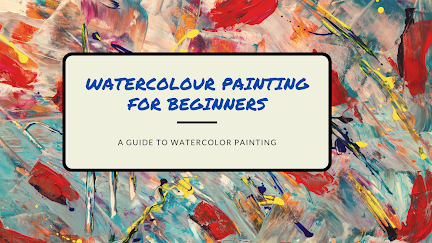**Introduction**
Welcome to the vibrant and fluid world of watercolor painting! If you're beginning your journey into this art form, you're in for a delightful experience. Watercolor painting offers a unique blend of spontaneity and control, a dance between water and pigment that can lead to stunning results. In this blog, we'll explore the joy of painting loosely and focusing on subjects you love. So grab your brushes, and let's embark on this colourful adventure!
**Why Paint Loosely?**
Painting loosely in watercolor is all about embracing imperfection and letting go of rigid control. This approach allows the water and colour to interact in unpredictable ways, creating effects that are often more expressive and vibrant than tightly controlled techniques. Loose painting can convey emotions and impressions, leaving some details to the viewer’s imagination.
**Materials You'll Need**
Before we dive into techniques, let's talk about the tools you'll need:
- **Watercolor Paints:** Start with a basic set of watercolor pans or tubes. Look for artist-grade paints for better pigmentation and quality.
- **Brushes:** A variety of brushes are available, but a good round brush is versatile enough for beginners. As you progress, explore different shapes and sizes.
- **Paper:** Watercolor paper is specifically designed to handle wet media. Look for papers labeled as ‘cold-pressed’ for a nice texture that holds water well.
- **Water and Palette:** You’ll need a jar of water for cleaning your brush and diluting paint, and a palette for mixing colours.
- **Additional Supplies:** Pencils for sketching, paper towels for blotting, and masking tape to secure your paper.
**First Steps: Getting Comfortable with Your Tools**
- **Practice Makes Perfect:** Experiment with your brushes and paints on scrap watercolor paper. Notice how water affects the pigment and how different brushes create various strokes.
**Learn to Control Water:** The key to watercolor is balancing the amount of water and paint. Practice creating washes – very diluted paint for a transparent effect, and less diluted for more vibrant colours.
**Painting What You Love**
Now, let’s talk about subject matter. Painting what you love is crucial in art. Your enthusiasm for a subject will shine through and keep you motivated. Love landscapes? Adore animals? Fascinated by flowers? Start there!
**Techniques for Loose Painting**
1. **Wet-on-Wet Technique:** This involves applying wet paint onto wet paper. It allows colours to blend naturally on the canvas, perfect for creating soft backgrounds or dreamy landscapes.
2. **Wet-on-Dry Technique:** Here, you apply wet paint onto dry paper. This offers a bit more control while still allowing for a loose feel. It’s great for defining shapes and adding details.
3. **Dry Brush Technique:** Using a brush with minimal water and more paint, you can create textured, rough strokes. This is ideal for adding details or texture to your painting.
**Tips for Loose Painting**
- **Hold Your Brush Loosely:** Literally! A relaxed grip allows for more fluid, expressive strokes.
- **Work Quickly:** Watercolor dries fast. Embrace the spontaneity and don’t overthink your strokes.
- **Use Big Brushes:** Larger brushes encourage broader, looser strokes and prevent you from focusing on tiny details.
- **Embrace Happy Accidents:** Watercolor can be unpredictable. Sometimes what seems like a mistake can add character to your painting.
**Simple Projects to Start With**
1. **Landscape:** Begin with a simple landscape. Paint a sunset sky using the wet-on-wet technique, letting the colours blend into each other.
2. **Floral Scene:** Flowers are forgiving subjects for loose watercolor painting. Use broad, relaxed strokes to suggest the shape of flowers and leaves.
3. **Abstract Art:** Abstract art is a great way to explore colour and emotion without the pressure of realism. Let your mood guide your colour choices and brush movements.
**Conclusion: Keep Learning and Enjoy the Process**
Remember, watercolor painting is a journey, not a destination. Each painting is a learning experience. Don’t be discouraged by what you perceive as mistakes. Over time, you’ll develop your unique style and approach. Most importantly, have fun and enjoy the creative process!
**Frequently Asked Questions**
1. **Do I need expensive materials to start?**
- Not at all. Start with basic, affordable materials. As you grow in your art journey, you can invest in higher-quality supplies.
2. **What if my painting doesn't look like what I envisioned?**
- That’s completely normal, especially in the beginning. Each painting is a step towards improvement. Celebrate
your progress, not just the end result.
3. **How can I preserve my watercolor paintings?**
- Keep them away from direct sunlight and consider using a fixative spray to protect the colours.
Best wishes & a happy New Year
Chris

Comments
Post a Comment